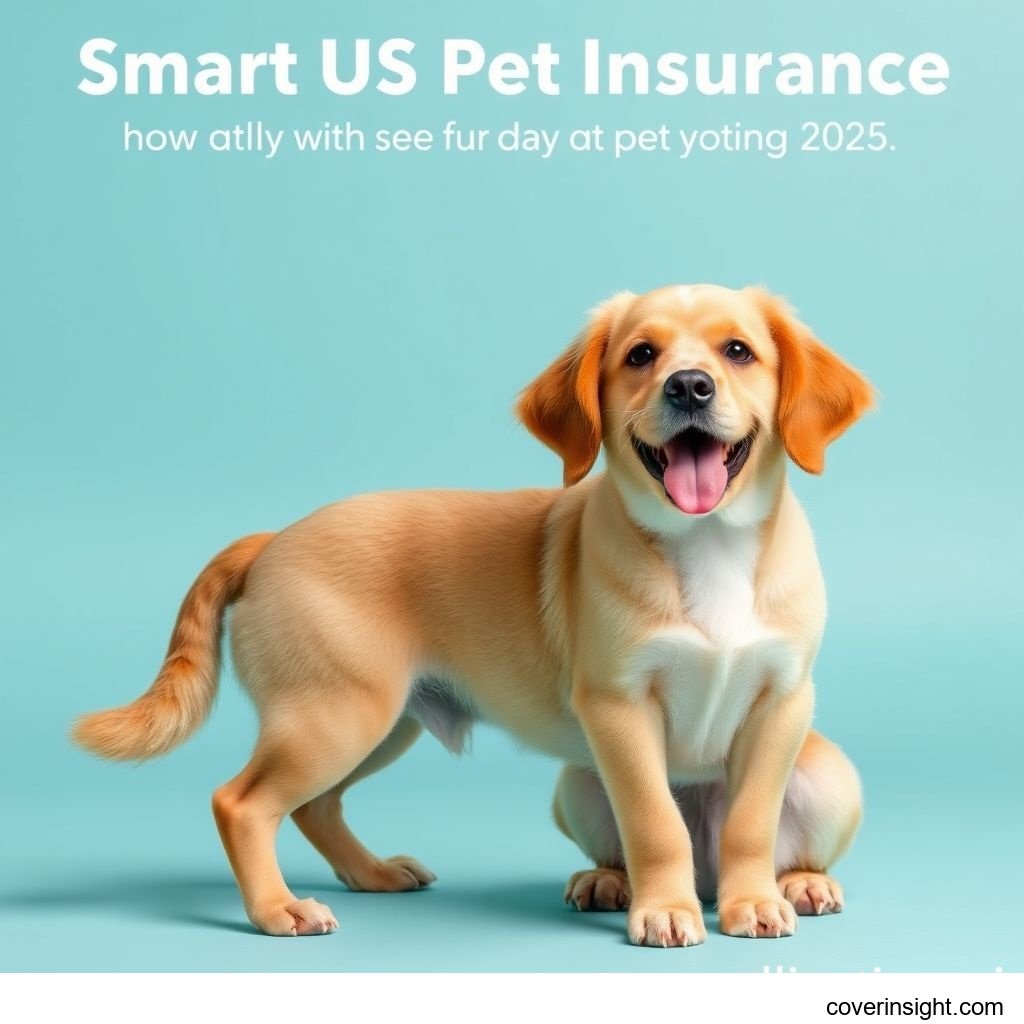Introduction
As a proud pet parent in the US, facing unexpected veterinary bills can be a daunting experience. In 2025, the landscape of pet care costs continues to evolve, making comprehensive planning more crucial than ever. This guide aims to shed light on how a pet insurance cost calculator can be your best friend in navigating these expenses, providing clarity and helping you make informed decisions about protecting your furry, feathered, or scaled family members. From routine check-ups to emergency surgeries, understanding your options for smart pet insurance is key to ensuring your pet receives the best possible care without breaking the bank.
Coverage Details
Choosing the right pet insurance means understanding what’s on offer and, just as importantly, what isn't. It's a bit like a safety net, but you need to know the size of the holes!
What’s Included
Most pet insurance plans in the US are designed to cover a wide range of medical expenses arising from accidents and illnesses. This typically includes emergency visits, diagnostics (like X-rays and MRI scans), surgeries, hospitalization, prescription medications, and even specialist care. For those seeking a deeper dive into financial tools, exploring an Unlock Savings: Pet Insurance Cost Calculator US 2025 can show you precisely what different coverage levels might cost.
Beyond standard medical needs, many modern providers offer add-on coverage. For instance, dental insurance for pets, often available as an optional rider, covers issues ranging from gum disease to tooth extractions. Given that dental problems are among the most common ailments for pets, this can be a real game-changer. For owners of unique companions, exotic pet insurance is also gaining traction, covering species like birds, reptiles, and small mammals. While not as widely available as dog or cat insurance, it's a vital consideration for ensuring specialized veterinary care for your less common pets. Some plans may also include wellness benefits for routine care like vaccinations and annual exams, though these are typically separate add-ons or part of wellness packages.
Common Exclusions
Even the most robust policies have their limits. The most common exclusion is pre-existing conditions—illnesses or injuries that your pet had before your coverage began or during a waiting period. This is why securing coverage when your pet is young and healthy is often advisable. Additionally, elective or cosmetic procedures, like tail docking or declawing, are generally not covered. Breeding costs, grooming, and specific behavioral therapies might also fall outside the scope of standard policies, though some premium plans might offer limited coverage for behavioral issues. It's always wise to read the fine print, as the specifics can vary significantly between providers and even within different plan tiers.
Cost Analysis
Understanding what drives your pet insurance premiums can feel like trying to solve a puzzle, but once you know the pieces, it's quite straightforward.
Price Factors
The cost of pet insurance isn't a one-size-fits-all figure. Several key factors influence your monthly or annual premium. Firstly, your pet's breed plays a significant role; certain breeds are predisposed to specific health issues, leading to higher rates. For instance, large breeds like Great Danes might have higher premiums due to a propensity for joint problems. Age is another critical factor; older pets are more likely to develop health conditions, thus costing more to insure.
Your location within the US also impacts the price, as veterinary costs vary widely from state to state and even within different cities. For example, vet services in New York City typically cost more than in a rural town in Iowa, and your premium will reflect that. The type of coverage you choose (accident-only, accident & illness, or comprehensive with wellness) and your selected deductible (the amount you pay before insurance kicks in) and reimbursement level (the percentage of vet bills the insurer pays back) will directly affect your premium. A lower deductible and higher reimbursement will mean a higher premium, and vice-versa.
Saving Tips
Nobody wants to pay more than they have to, and there are smart ways to save on pet insurance. Many providers offer multi-pet discounts if you insure more than one animal. Opting for a higher deductible can significantly lower your monthly premium, though it means more out-of-pocket expense if you do need to file a claim. Similarly, choosing a lower reimbursement level (e.g., 70% instead of 90%) will reduce your premium.
Consider wellness plans if you want to budget for routine care, but calculate if the annual cost truly outweighs the benefits for your pet's specific needs. Finally, and perhaps most importantly, compare quotes from multiple providers. Don't just stick with the first one you find. Using tools like an Unlock Savings: Pet Insurance Cost Calculator US 2025 across different insurers can help you pinpoint the most cost-effective plan for your needs. Remember, securing coverage when your pet is young and healthy locks in lower rates and avoids exclusions for pre-existing conditions down the line. To explore a broader range of options, you might also want to consult Insurance Resources Global or delve into specific providers via US Insurance Home.
FAQs
How much does pet insurance cost calculator cost?
A pet insurance cost calculator itself doesn't cost anything. These are free online tools provided by insurance companies or comparison websites that allow you to input your pet's details (species, breed, age, zip code) and desired coverage level to receive an estimated premium. It’s an invaluable tool for comparing policies without commitment.
What affects premiums?
Premiums are primarily affected by your pet's age, breed, and location. Older pets and breeds prone to genetic conditions typically have higher premiums. Your chosen deductible, reimbursement percentage, and the type of coverage (e.g., accident-only vs. comprehensive) also significantly influence the cost.
Is it mandatory?
No, pet insurance is not mandatory in the US. Unlike human health insurance, there is no legal requirement to have pet insurance. However, many pet owners choose to purchase it for financial peace of mind and to ensure their pets can access necessary medical care without budget constraints.
How to choose?
Choosing the right pet insurance involves comparing quotes, reviewing coverage details, understanding exclusions, and reading customer reviews. Consider your pet's specific needs, your budget, and the reputation of the insurer. Look for flexible plans that allow you to customize deductibles and reimbursement levels. Consulting resources from the National Association of Insurance Commissioners or your State Insurance Departments can also provide valuable insights into reputable providers and consumer rights.
Consequences of no coverage?
The primary consequence of not having pet insurance is the potential for significant out-of-pocket expenses for unexpected veterinary care. A severe accident or sudden illness can lead to bills totaling thousands of dollars, forcing difficult decisions about your pet's treatment based on financial limitations rather than medical need.
Based on my experience as someone living in the US, owning a pet isn't just a joy; it's a significant financial responsibility. I've personally seen friends face five-figure vet bills for emergencies, and the stress is immense. While pet insurance might seem like an added expense, thinking about it as a budgeting tool for unpredictable health costs really shifts the perspective. It’s not just about covering worst-case scenarios; it’s about having the freedom to say "yes" to the best treatment for your beloved companion without a second thought about your wallet. The peace of mind it offers is, for many, priceless.
In 2023, the American Pet Products Association (APPA) reported that U.S. pet owners spent an estimated $35.9 billion on vet care and product sales. This number continues to climb, underscoring the growing costs. For instance, consider a real-world scenario: a pet owner in California, whose otherwise healthy Golden Retriever, "Buddy," suddenly developed an aggressive form of cancer. The recommended chemotherapy and radiation treatments easily topped $15,000. For those without insurance, this could mean making heart-wrenching decisions. However, with a good pet insurance policy covering 80% after a $500 deductible, the owner's out-of-pocket cost would drop to around $3,500 – a still significant but far more manageable sum, allowing Buddy to get the critical care he needed. This isn't an isolated incident; stories like Buddy's play out across the nation daily, highlighting the true value of being prepared.








Comments